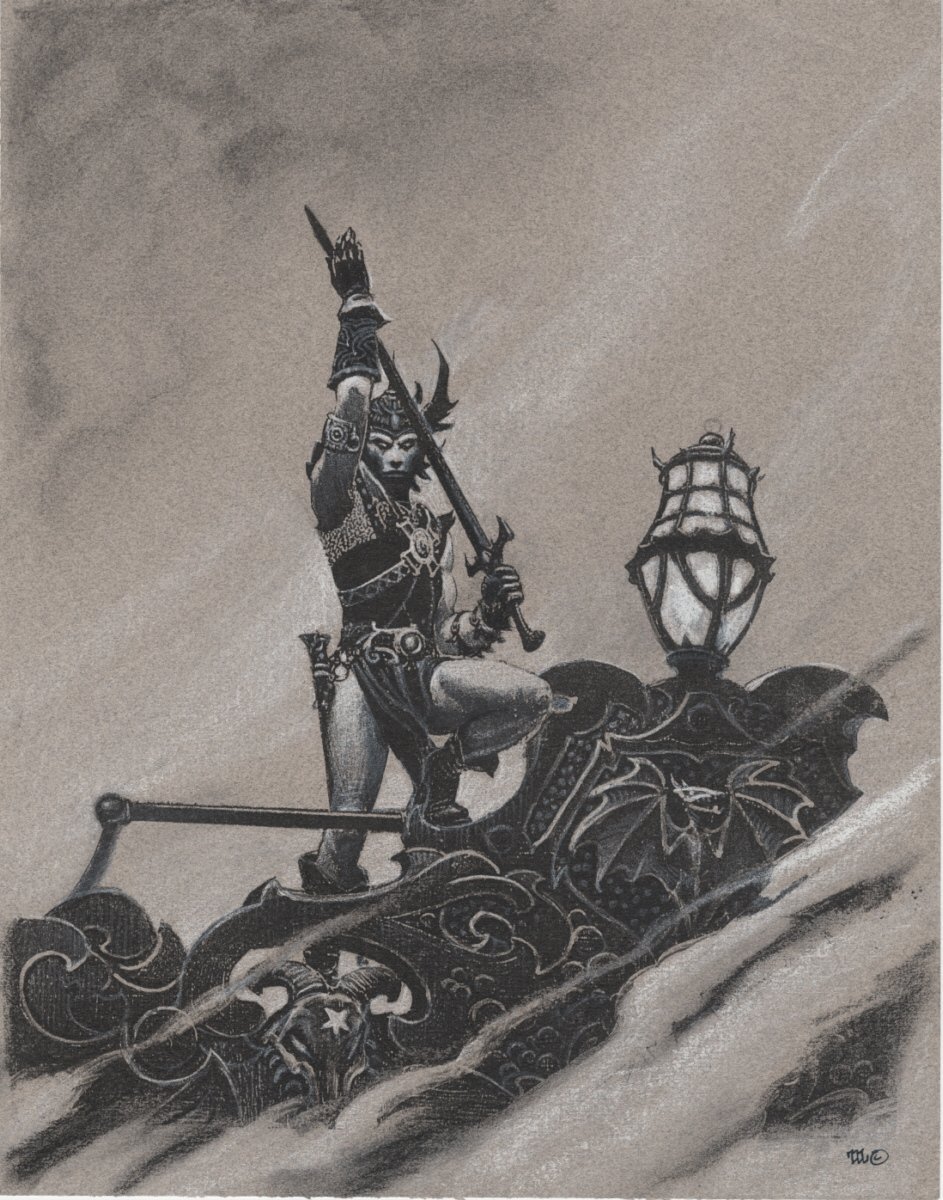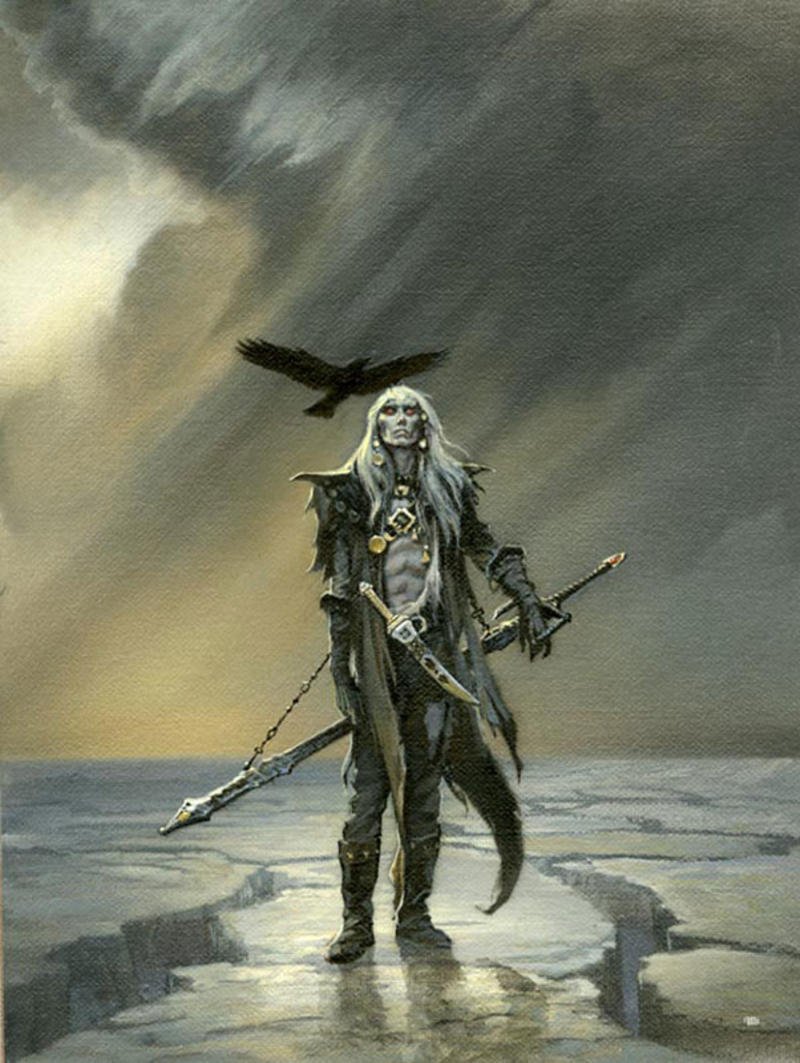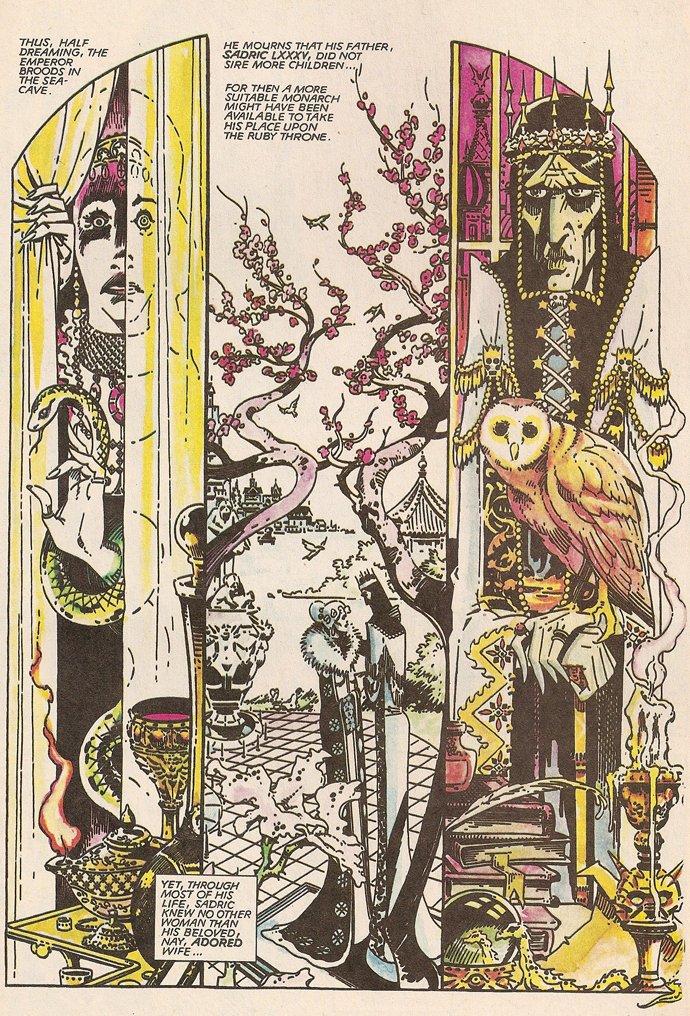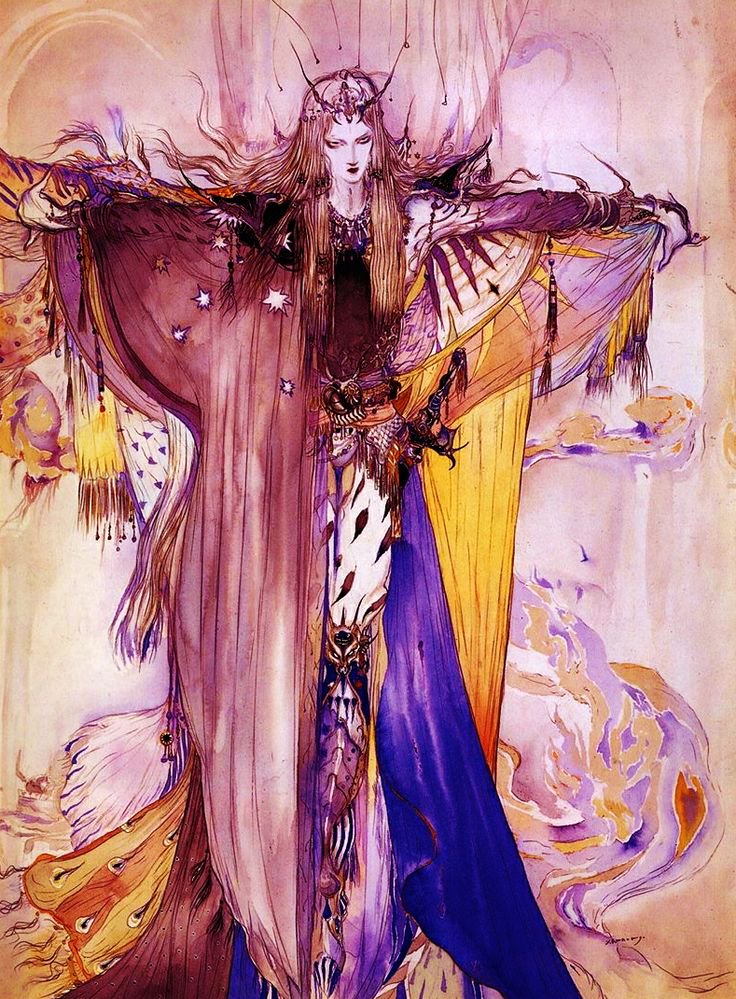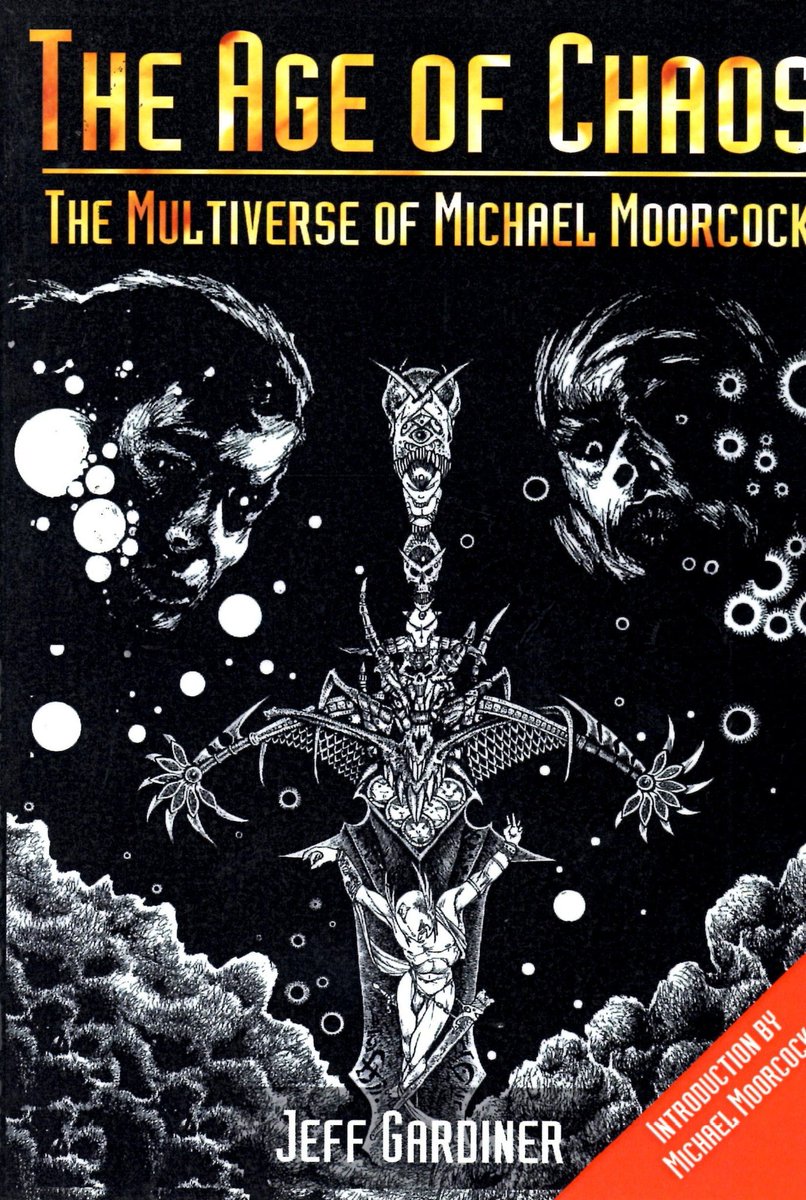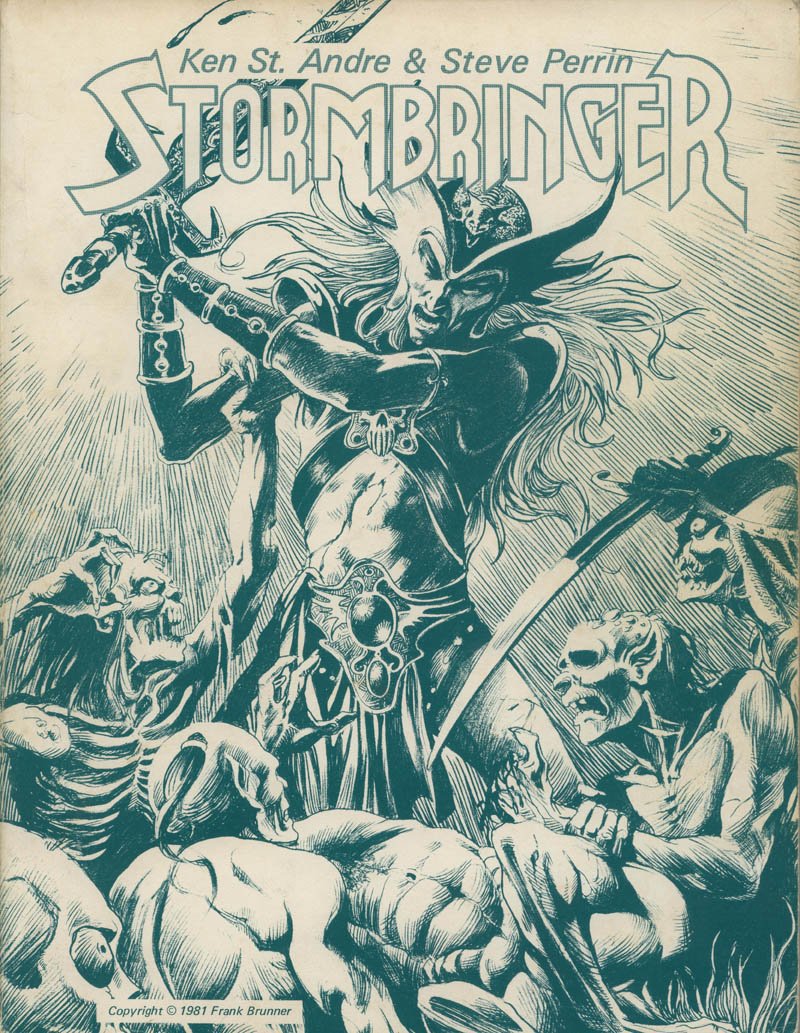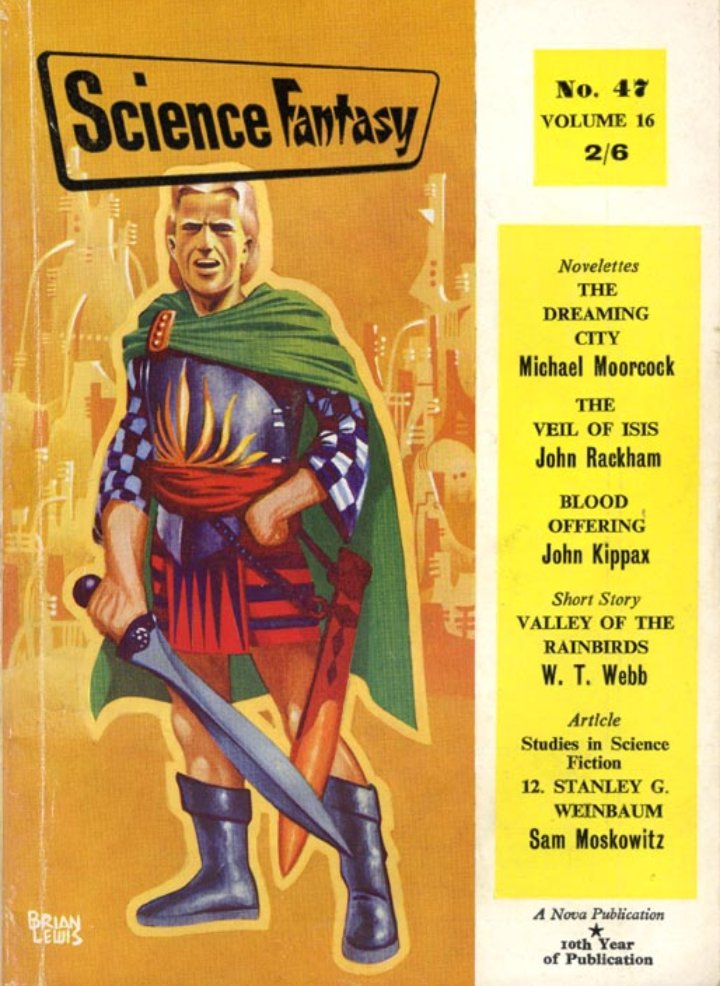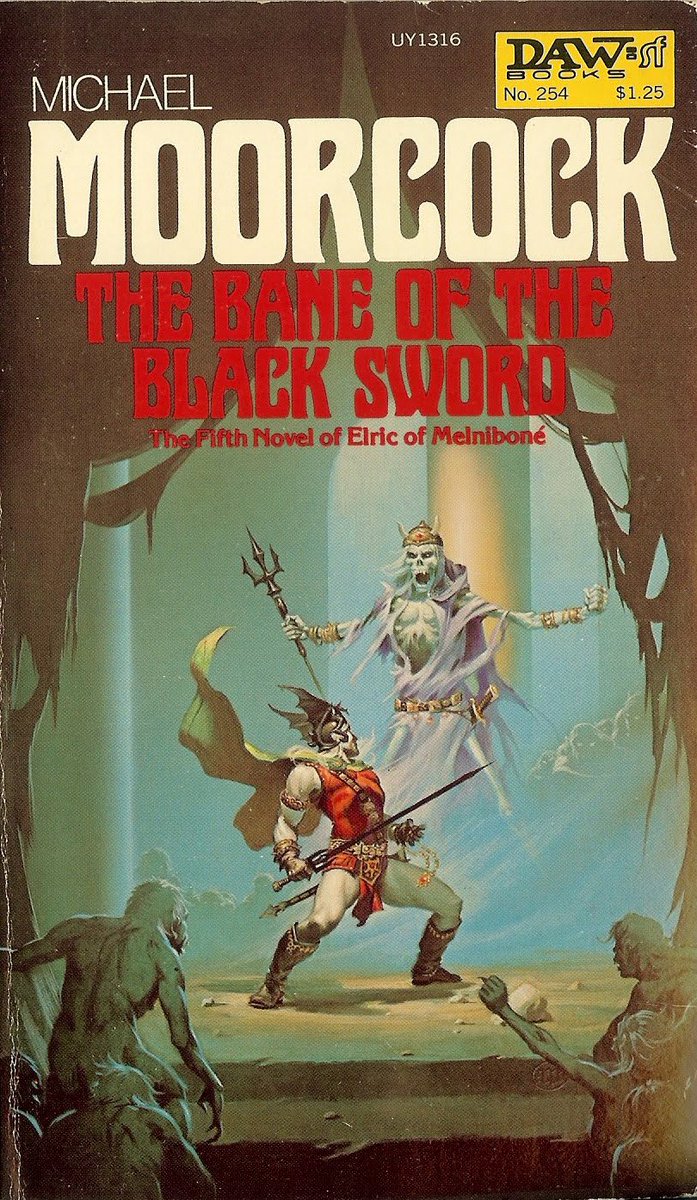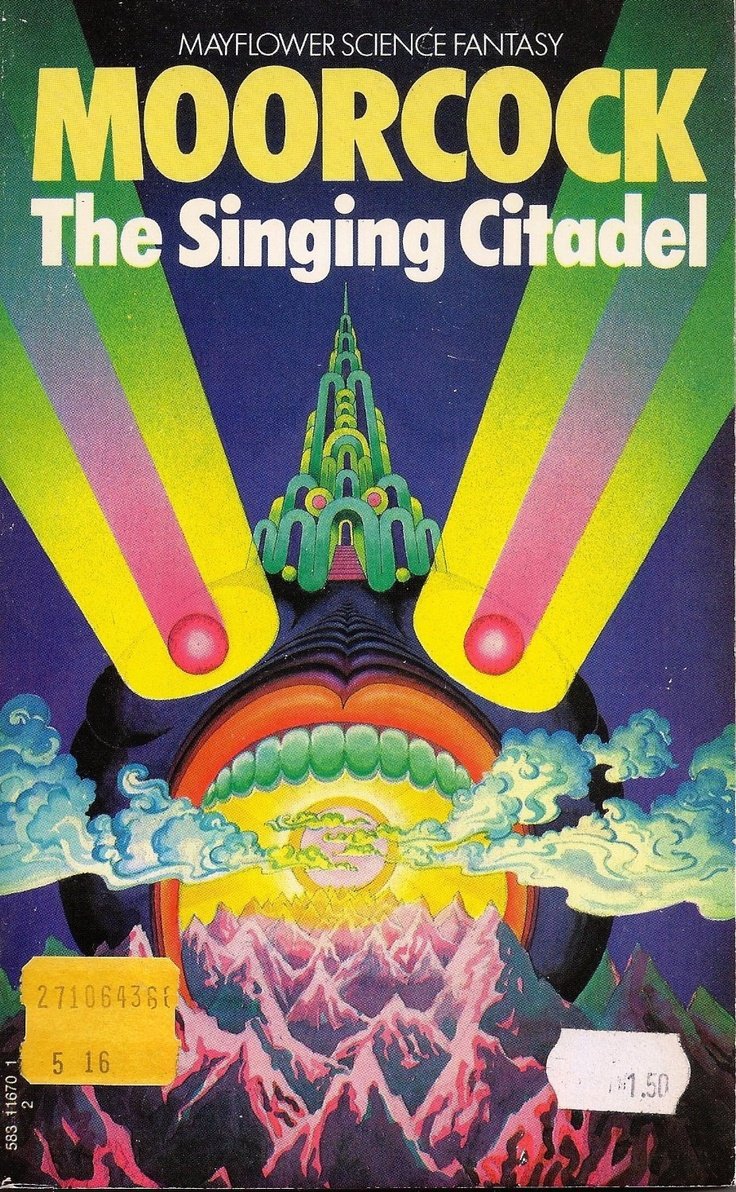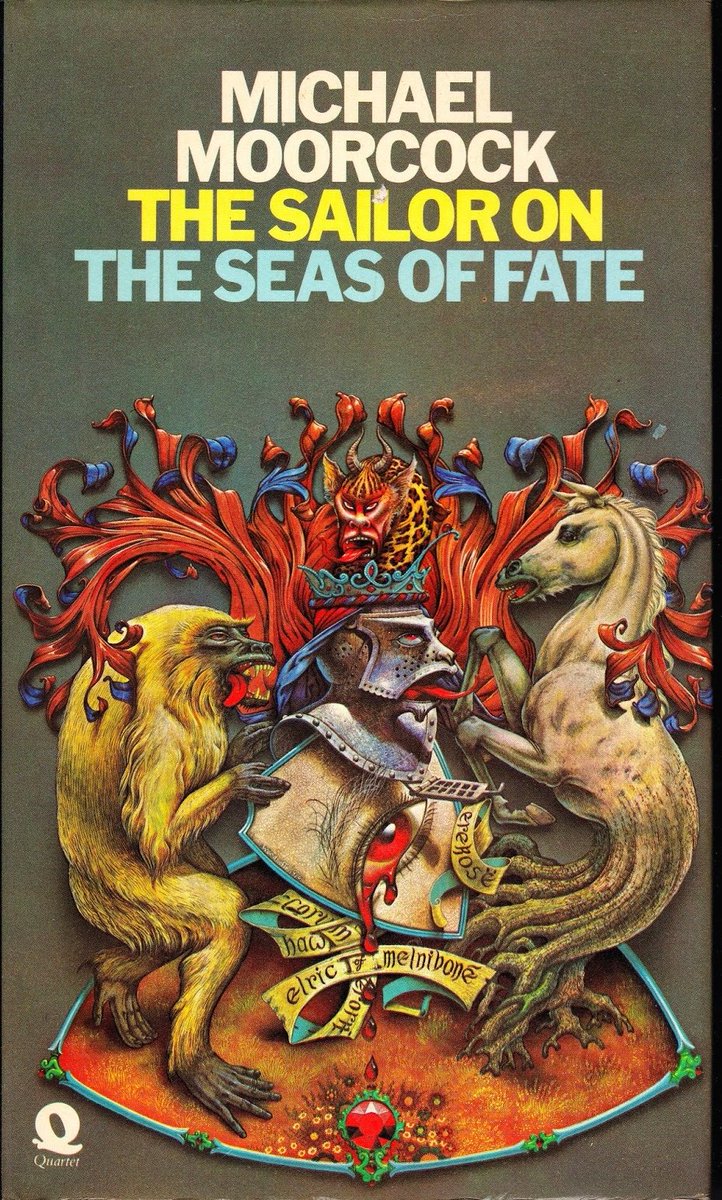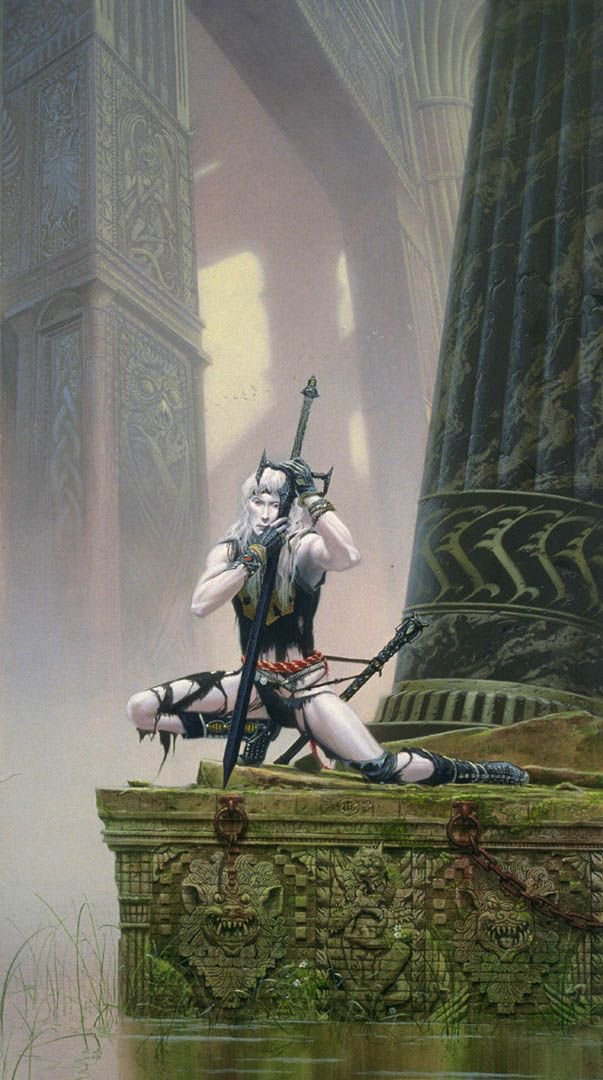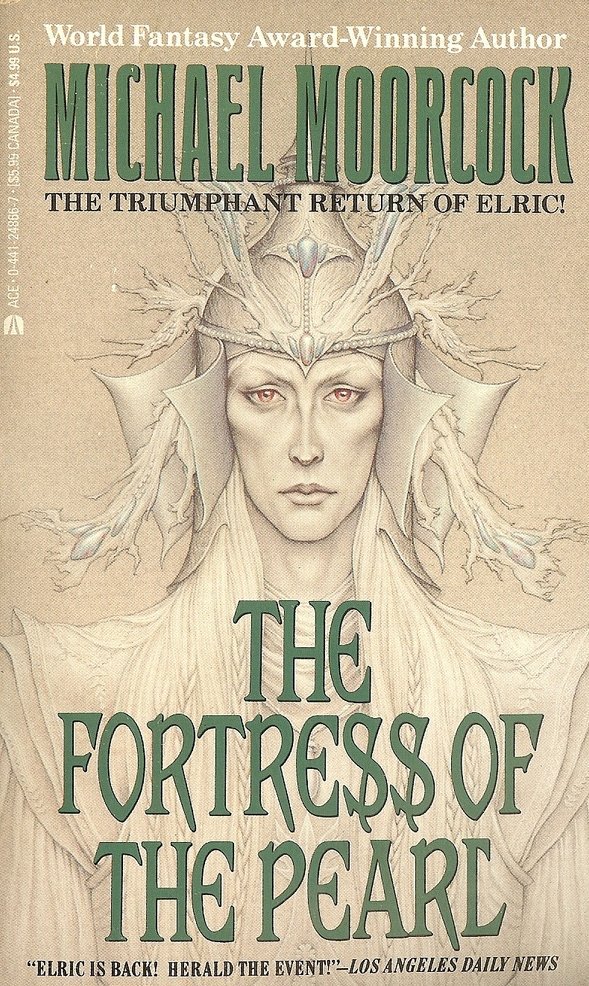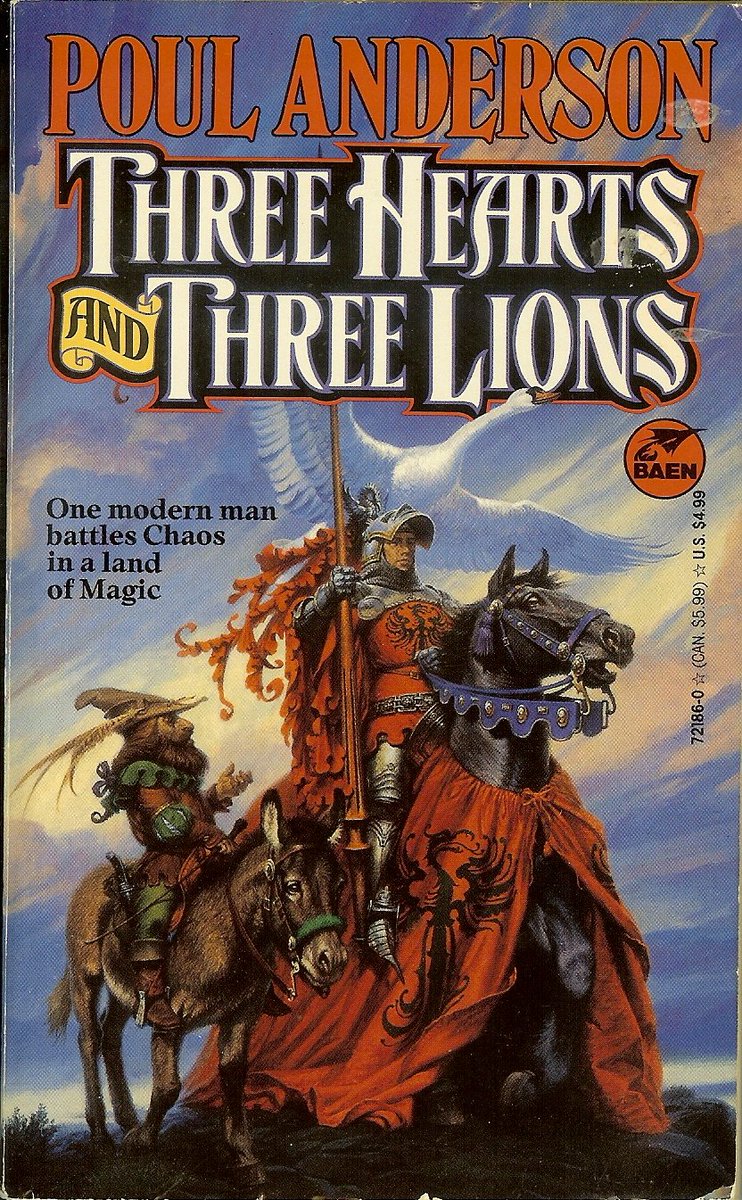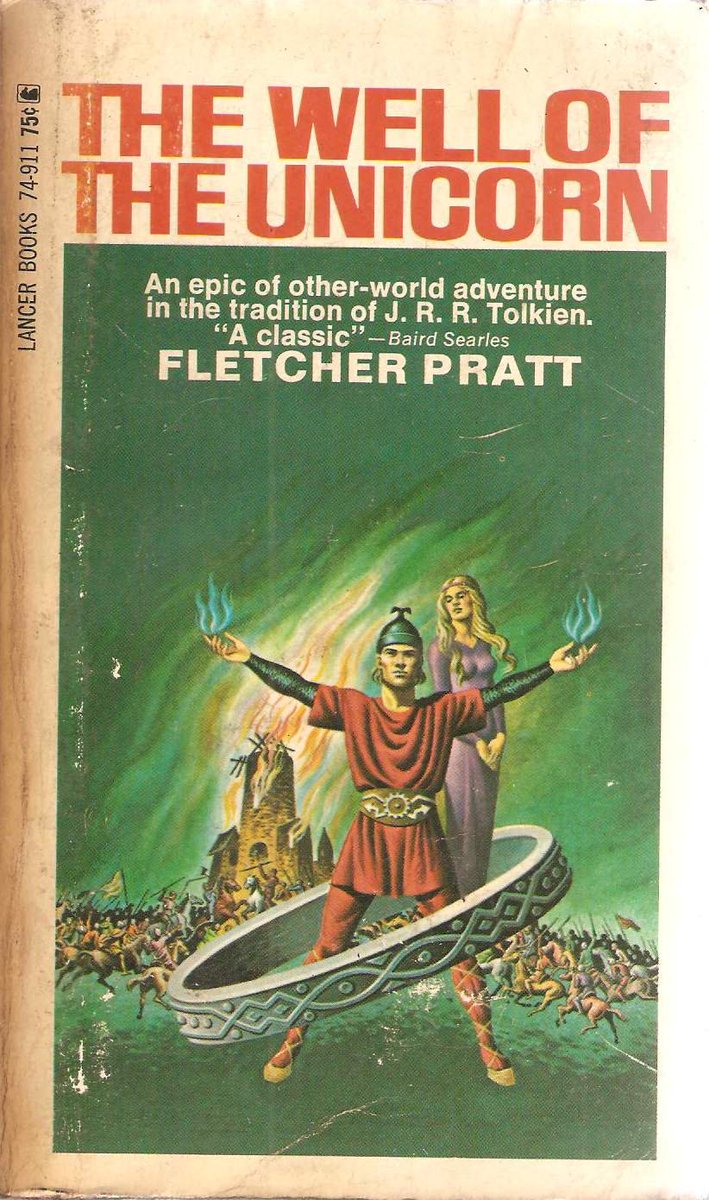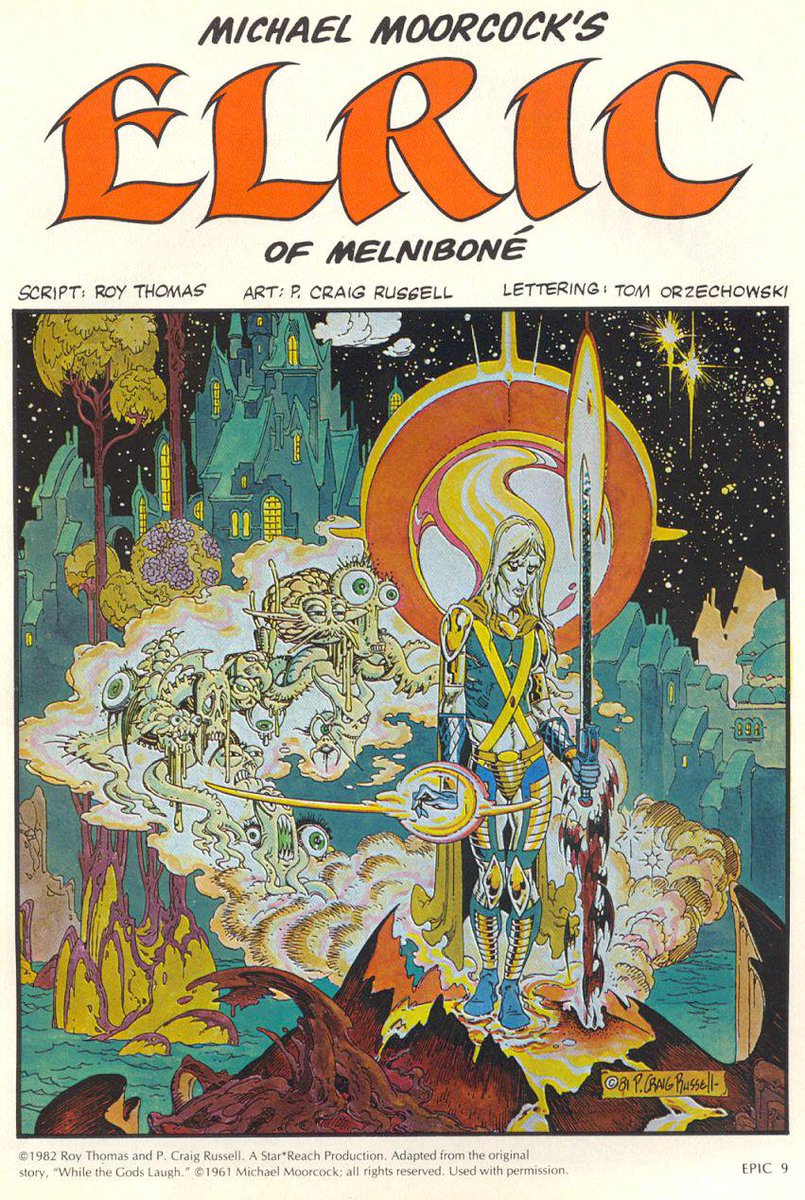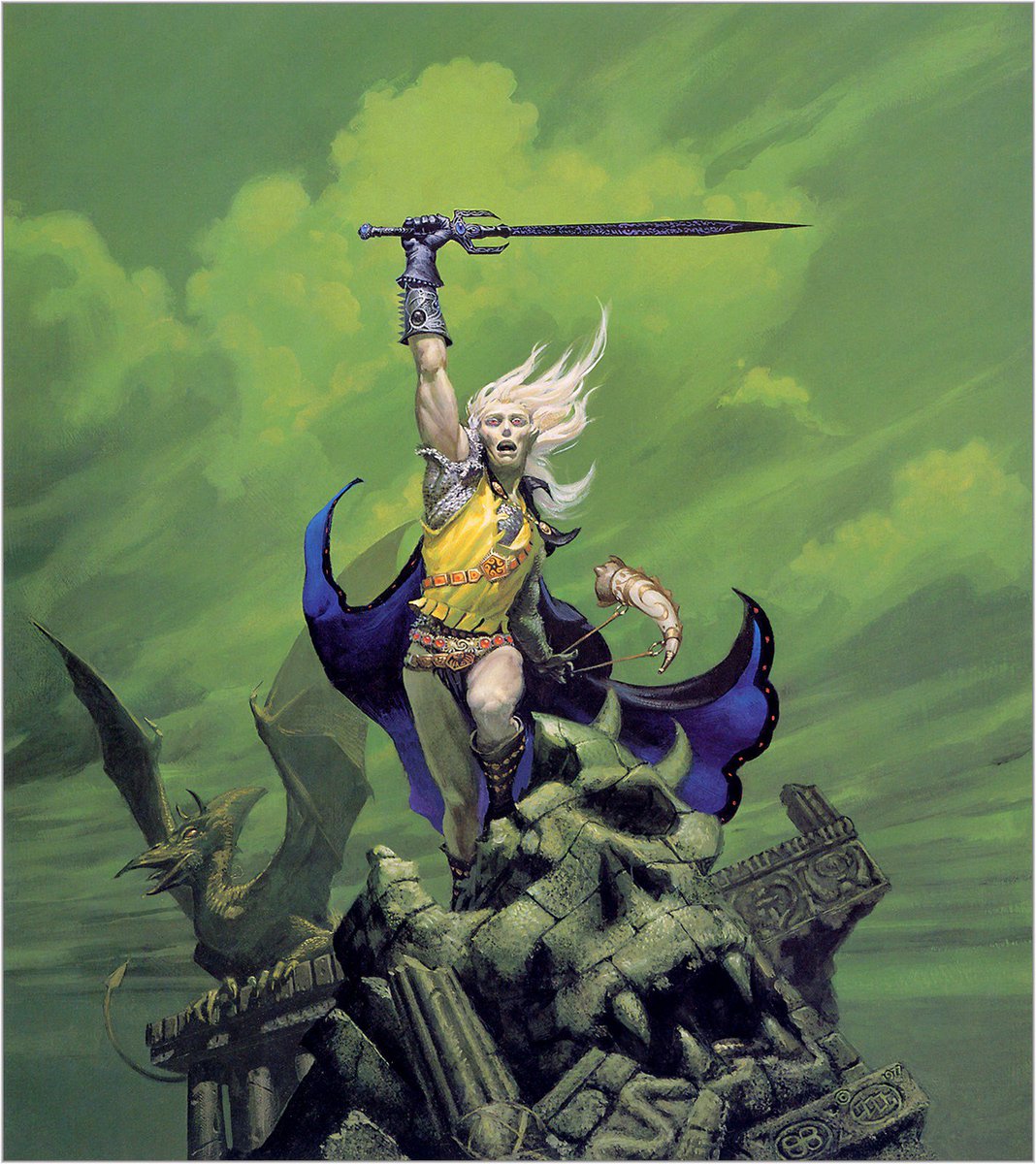Today in pulp... "It is the colour of a bleached skull, his flesh; and the long hair which flows below his shoulders is milk-white." This is how we are introduced to Michael Moorcock& #39;s anti-hero Elric of Melniboné.
Let& #39;s learn more... #FridayThoughts
Let& #39;s learn more... #FridayThoughts
Elric, also known as The Albino Emperor, Elric Kinslayer and the Pale Prince of Ruins is the 428th emperor of Melniboné, and the last. A sickly sorcerer sustained by enchanted herbs, he is a brooder and an outsider to his people.
Elric is the sole heir to the Ruby Throne of Melniboné, after his mother died in childbirth. Like Hamlet he is a prince who studied the world and questions his role within it. He is also a moral person, which makes his people think of him as weak.
Elric& #39;s story is both a & #39;voyage and return& #39; narrative of his travels amongst humans and a & #39;killing the monster& #39; tale of his struggles against his cousin Yyrkoon and indeed his own role as an Eternal Champion.
Elric is set in the Michael Moorcock multiverse: a series of different versions of Earth at various times. Law and Chaos battle in each one, and an Eternal Champion must strive - often unwillingly - to maintain the balance between them.
To aid his role as Eternal Champion - and to provide his sickly body with strength - Elric wields the runesword Stormbringer: a sentient weapon that feeds on souls. However he must feed it souls whenever he draws it - a curse that causes him bitter grief.
Elric first appeared in Science Fantasy magazine in 1961, featuring in five novelettes. Four novellas followed, with the last one "Doomed Lord& #39;s Passing" published in 1964.
A number of other Elric stories were published in the 1960s and 70s, filling in gaps between the novellas. Collections of the original stories were also published by DAW, Lancer Books, Mayflower and Quartet.
The next original novel, "Elric of Melniboné" was published in 1972 as a a prequel to the earlier stories explaining how he came to possess Stormbringer...
...but it was another 17 years before the next Elric novel "The Fortress Of The Pearl" was published in 1989. Moorcock published further original Elric novels in the early 2000s.
Many influences on Moorcock& #39;s Elric saga have been cited, including Poul Anderson and Fletcher Pratt. But in the end Elric is unique to Michael Moorcock and his fictional multiverse.
Elric is a hugely complex character; not quite a tragic hero, not quite an anti-hero. Moorcock& #39;s concise style in describing him in his world adds to the sense that an elegant but intense narrative is being offered to the reader.
The world of Elric is also rich and complex, but not unfamiliar. The saga has been described as anti-Tolkein, unredemptive and Norse inspired. There is something in all of those assertions.
There are many excellent Elric graphic novels and role-playing games, so you can enjoy the world of Melniboné and the struggle for (and against) the Ruby Throne however you wish.

 Read on Twitter
Read on Twitter